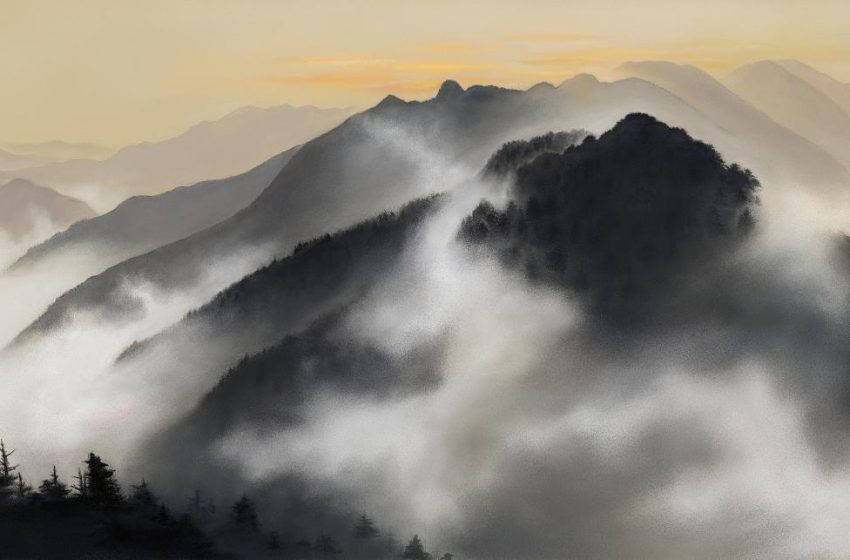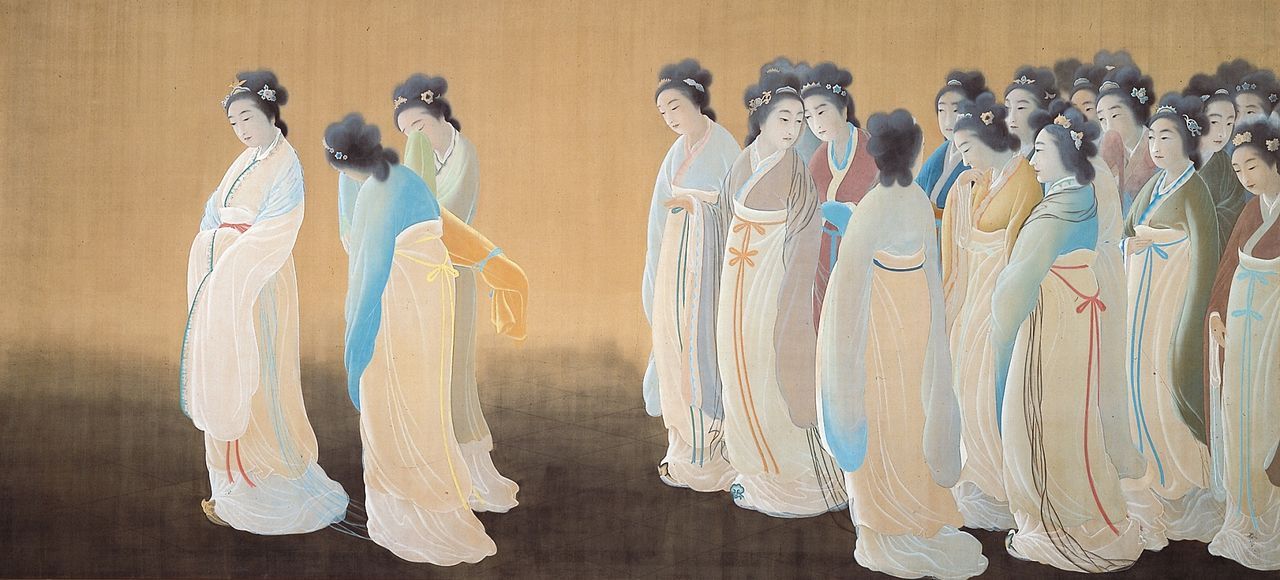
Holy peaks of Chichibu at spring dawn by Taikan Yokoyama
Exploring Nihonga: The Traditional Art of Japanese Painting
Welcome to JapanPassage, where we delve into the enchanting world of Nihonga (日本画), the traditional style of Japanese painting. Nihonga is deeply rooted in Japan’s rich cultural heritage and artistic traditions. This art form utilizes traditional materials and techniques, often incorporating pigments, Japanese paper, and silk canvas.
Understanding Nihonga: A Blend of Styles
Nihonga can be broadly categorized into two main types:
- Irogane (Color Paintings): These paintings use a variety of pigments, typically ground minerals, mixed with glue-based binders. They are known for their vibrant colors and meticulous details.
- Sumi-e (Ink Painting): Sumi-e is characterized by its monochromatic use of ink, conveying a sense of harmony, simplicity, and abstraction. It emphasizes the art of brushwork.
Origins of Nihonga
The term “Nihonga” emerged during the Meiji period (1868-1912) as Japan experienced a surge in Western influence, including Western-style oil painting. Prior to this, the art was referred to by different names such as “Yamato-e” and “Wa-ga” paintings.
During this period of cultural exchange, artists and scholars like Ernest Fenollosa played pivotal roles in shaping the understanding of Nihonga. Fenollosa’s 1882 lecture, “The True Meaning of Pictures,” introduced the term “Japanese painting” to describe art that:
- Emphasized representation over realistic imitation.
- Avoided strong shading.
- Utilized distinct contour lines.
- Employed subtle color tones.
- Focused on simplicity in expression.
These defining characteristics continue to influence Nihonga today.
Nihonga Education and Techniques
The process of creating Nihonga involves using a variety of traditional materials, such as powdered pigments, glue, ink, brushes, silk canvas, and Japanese paper (washi). Artists apply pigments to the canvas, building up layers with a glue-based binder. This technique allows for rich color tones and intricate details.
Nihonga artists pay careful attention to brushwork and the interaction between pigments and surfaces. While traditional methods remain foundational, contemporary Nihonga artists often incorporate innovative techniques and materials, embracing both tradition and modernity.
In the realm of art education in Japan, Nihonga instruction primarily occurs at specialized art universities and institutions. While it is not commonly taught in general high school curricula due to the expense of materials and the need for specialized instructors, students interested in Nihonga often pursue it at the university level.
As you explore Japan, consider visiting museums, galleries, and cultural institutions to appreciate the diverse world of Nihonga. This art form, steeped in history and tradition, offers a unique window into Japan’s artistic soul. At JapanPassage, we celebrate the beauty and cultural significance of Nihonga, inviting you to discover the captivating world of Japanese painting.

Discovering the Masters: 10 Renowned Nihonga Artists
When exploring the world of Nihonga, you’ll undoubtedly encounter the works of these ten exceptional Japanese painters. Each artist has left an indelible mark on the canvas of Japanese art, contributing to the rich tapestry of Nihonga with their unique styles and creativity.
1. 竹内栖鳳 (Takeuchi Seiho): Known for his meticulous bird and flower paintings, Seiho’s attention to detail and vibrant colors make his works truly captivating.
2. 下村観山 (Shimomura Kanzan): Kanzan’s landscapes, often featuring dramatic mountain scenes, reveal his deep appreciation for nature’s beauty.
3. 鏑木清方 (Kaburaki Kiyokata): A master of bijinga (beautiful women) portraits, Kiyokata’s elegant and refined works are celebrated for their grace and charm.
4. 上村松園 (Uemura Shoen): Shoen’s paintings of women, often in traditional attire, showcase her exceptional skill in capturing delicate expressions and emotions.
5. 前田青邨 (Maeda Seison): Seison’s landscapes and nature-themed works reflect a profound connection to the Japanese countryside.
6. 横山大観 (Yokoyama Taikan): Taikan’s innovative approach to Nihonga and his emphasis on bold compositions have left an enduring legacy.
7. 東山魁夷 (Higashiyama Kaii): Known for his ethereal landscapes, Kaii’s works convey a sense of serenity and harmony with nature.
8. 加山又造 (Koyama Matazo): Matazo’s abstract and avant-garde Nihonga paintings have pushed the boundaries of traditional Japanese art.
9. 平山郁夫 (Tadashi Hiramatsu): Hiramatsu’s contemporary Nihonga works often explore themes of light, shadow, and reflection.
10. 千住博 (Hiroshi Senju): Senju’s innovative use of mineral pigments and his mastery of the waterfall motif have garnered international acclaim.
These ten artists represent the diverse and ever-evolving world of Nihonga. Their contributions have not only enriched Japanese art but also captivated art enthusiasts worldwide. As you explore Nihonga, keep an eye out for their masterpieces in museums and galleries across Japan, and let their works transport you into the heart of Japanese culture and creativity.
Exploring Nihonga at the National Museum of Modern Art
If you’re eager to immerse yourself in the world of Nihonga, the National Museum of Modern Art (known as MOMAK) in Tokyo is an exceptional destination. Here, you can marvel at a diverse collection of modern Japanese paintings, including the intricate and captivating Nihonga style.
Address: National Museum of Modern Art (MOMAK) 3-1 Kitanomaru Koen, Chiyoda City, Tokyo 102-8322, Japan
Opening Hours:
- Tuesday to Thursday and Sunday: 10:00 AM to 5:00 PM
- Friday and Saturday: 10:00 AM to 8:00 PM
- Closed on Mondays (unless Monday is a national holiday, in which case it’s closed the following day)
Admission Fees:
- Adults: 500 yen
- College students: 250 yen
- High school students and younger: Free
At MOMAK, you’ll encounter a fascinating array of Nihonga works, from traditional pieces that honor centuries-old techniques to contemporary creations that push the boundaries of this art form. The museum’s tranquil surroundings within Kitanomaru Park add to the overall experience, allowing you to appreciate Nihonga’s beauty in a serene setting.
Whether you’re a seasoned art enthusiast or simply curious about Nihonga, a visit to the National Museum of Modern Art promises to be a journey of artistic discovery. Don’t miss this opportunity to witness the evolution of Japanese painting and its enduring appeal.

